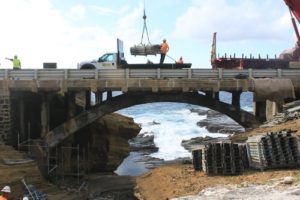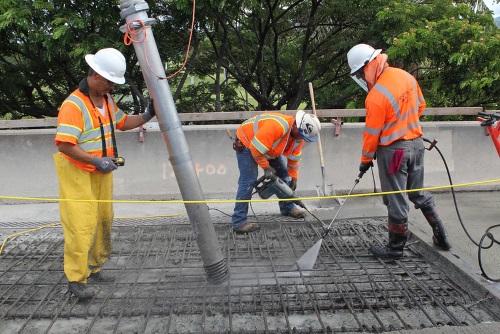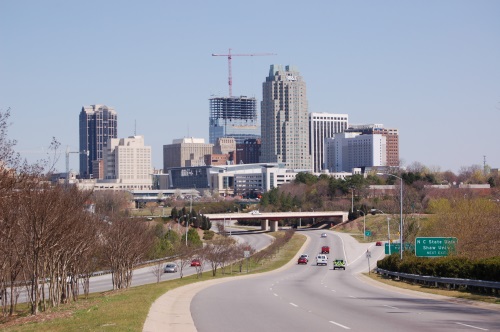The Hawaii Department of Transportation is looking at a range of studies that examine how the potential for sea level rise (SLR) due to climate change could impact transportation infrastructure.
The most recent study, published in March of 2020 examined how direct marine inundation – which is when sea water levels rising above the current land levels – could affect Hawaii’s infrastructure but also at the impact of groundwater inundation, known as GWI.
GWI describes flooding that occurs as groundwater is lifted above the elevation of the ground surface and buried infrastructure; a difficult flooding type to manage since groundwater flooding cannot be stopped by coastal barriers such as sea walls.
That study – conducted by researchers at the University of Hawaii at Mānoa School of Ocean and Earth Science and Technology – predicts that sea level rise will likely cause large percentages of Hawaiian land area to be impacted GWI, with Shellie Habel, lead author of the study, noting that the results “highlight the need to readjust our thinking regarding the flooding that accompanies sea level rise.”
Ed Sniffen, Hawaii DOT’s deputy director for highways and chair of AASHTO’s Committee on Transportation System Security and Resilience, estimated in a previous report that it would cost around $15 billion to protect all of the state’s coastal highways from the rising seas. The figure assumed $7.5 million for every mile of road that will need to escape erosion in the next 50 to 100 years and $40 million for every mile of bridge.
The agency began a vulnerability study in December 2019 to develop a comprehensive inventory of “potential extreme weather impacts” to Hawaii’s highway system; impacts that include GWI, SLR, and other natural disasters such as rockfalls and landslides.

That’s in addition to a statewide assessment of SLR impacts conducted in 2017, which resulted in the Hawaii Sea Level Rise Vulnerability and Adaptation Report. That report predicted a 3.2-foot rise in global sea levels by 2100, one that could be reached as early as year 2060 under more recently published scenarios. Chronic flooding with 3.2 feet of SLR could result in approximately 25,800 acres of land in the Hawaii unusable, with roughly 34 percent of that potentially lost land containing a large amount of highway infrastructure in Maui, Oahu, and Kauai alone.
Currently, over 38 miles of major roads could be chronically flooded across the Hawaiian Islands, ranging from residential roads to sections of coastal highways such as Kamehameha Highway on Oahu.
And much of that flooding could be from GWI rather than just direct marine inundation, thus not stoppable by traditional sea walls, which is why the Hawaii DOT is looking closely at creative engineering mitigation strategies for all flooding mechanisms for highways and bridge foundations.
Part of the agency’s flood mitigation planning is based on a study conducted for the Hawaii DOT by the University of Hawaii – called State Coastal Highway Program Report – released in August 2019. That report uses a new, detailed formula developed by the university to rank nearshore roads in order of urgency. Most of its suggested mitigation efforts focus on either “hardening” the roads and bridges or relocating them all together to higher ground.
As a result, for the next two decades or so, the Hawaii DOT plans to strengthen and maintain the roadways as they are in place. For the future, it is also looking at elevating roadways and even relocating highways further inland and tunneling through parts of mountains to make that happen. For instance, elevating the highway on Oahu’s Windward side could involve raising the road as high as nine feet. An alternative solution would be to relocate the highway further inland which would likely include tunneling through parts of the Koolau mountains at greater cost, the agency noted.


